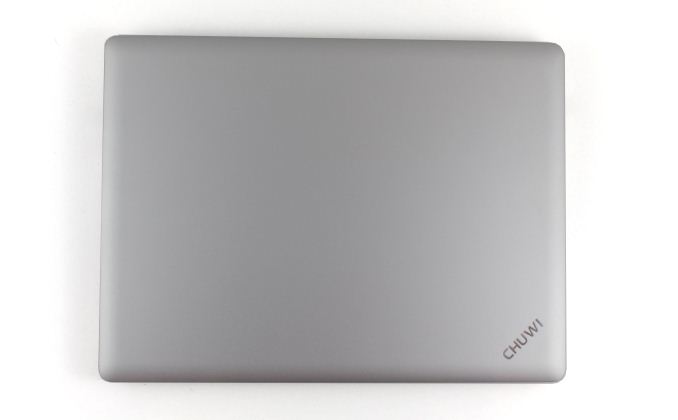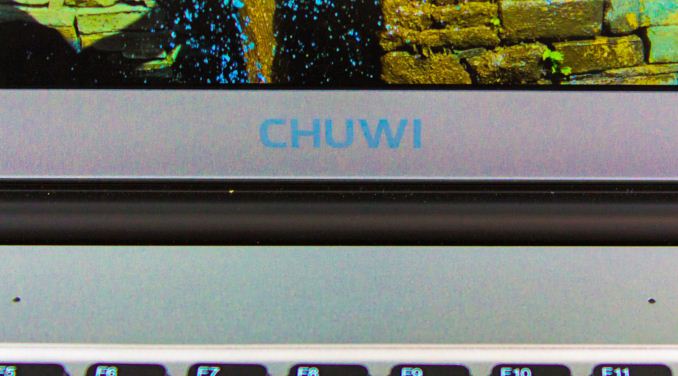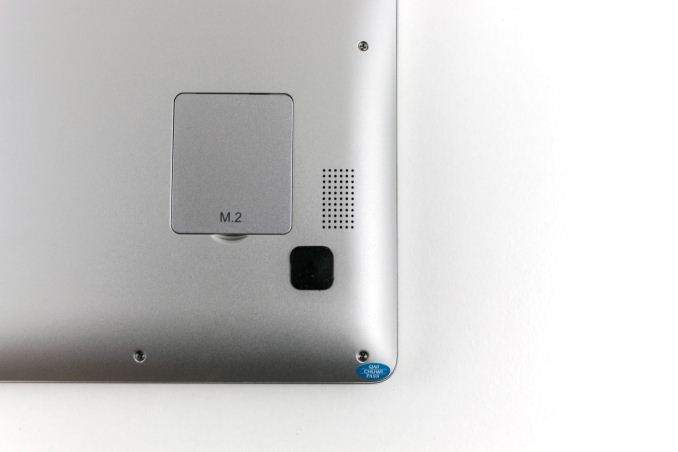The Chuwi LapBook 12.3 Review: Premium Feel, Budget Price
by Brett Howse on September 6, 2017 8:00 AM EST- Posted in
- Laptops
- Apollo Lake
- Goldmont
- Chuwi
Final Words
This is one of the shortest reviews we’ve ever done of a laptop, mostly because it is almost a complete replica of the larger Chuwi LapBook 14.1 we reviewed earlier this year. With the same internals, the performance is practically the same, and it would be very easy to write the smaller version off as a smaller version of the larger notebook. In fact, this isn’t actually the case at all.
Honestly, Chuwi needs to work on its branding more than almost anything. They’ve fallen into calling their devices names that are very similar to other products from other manufacturers. This is probably with the attempt to leverage some of that existing brand recognition, but it is to Chuwi’s detriment to do this. Their products can stand on their own, and be judged on their own. They aren’t all home runs; Chuwi sent the Hi-13 2-in-1 tablet a while back for us to check out, and although we’ve not had a chance to do a full review on it, the Hi-13 is a bit too heavy and awkward as a tablet, and the 2-in-1 nature means that it’s even heavier when used as a laptop, but the LapBook’s we’ve checked out are a different story. Both the LapBook 14.1 and LapBook 12.3 are great devices for the money.
Their naming is confusing though, since they offer several models in the LapBook range, and the only thing different is the screen size tacked on the end, but the LapBook 14.1 and 12.3 are very different devices. The plastic 14.1 is a fine machine for $270, with a good 1920x1080 IPS display that you normally don’t see in a laptop that price, but the LapBook 12.3 is a step ahead of the larger 14.1 in several categories. What makes the LapBook branding even more confusing is that they also offer a LapBook 15.6 which is an older Atom X5 platform, with a 1920x1080 TN display. That means there are three LapBook models, and all of them are significantly different than the others. The company needs to do a better job differentiating its products.
The LapBook 12.3 does jump ahead of the 14.1 in several areas. The display is one of the standout features. The 12.3-inch panel offers great pixel density, for very sharp images and text, and the 3:2 aspect ratio makes it great for productivity tasks. The bezels are larger than many other laptops, including the LapBook 14.1’s 7mm bezels, but is a fact of life when Chuwi can’t afford to get their own custom panels made. They wanted to go with the 3:2 panel, and it was a good choice, despite the bezels.
The all-aluminum build on the LapBook 12.3 puts it into a much higher category of laptop for look and feel. The plastic on the 14.1 was fine, and durable, but this design has that sleek, cool feel of aluminum that you just can’t replicate. It doesn’t change the way you use the device, but it really makes it feel like it’s something you paid a lot more for.
Overall, the Apollo Lake platform is speedy enough for light tasks, and the generous 6 GB of RAM is far more than you see on most budget devices. The 64 GB of eMMC is adequate, but you can pretty easily add more storage via microSD or M.2 if you need it. Even the WiFi is an Intel solution, meaning it’s going to be a stable connection, at least in our experience.
The LapBook 12.3 takes everything that made the 14.1 great, and steps it up a notch. But the amazing thing is that it does this, and doesn’t take the price and put this laptop into another category. The Chuwi LapBook 12.3 isn’t going to be able to compete with Ultrabooks on many fronts, but it does offer a lot of an Ultrabook’s appeal in its thin, light, and sleek design, but with a much, much lower price point. Not very long ago, buying a laptop for under $500 meant it was going to offer several severe compromises, but Chuwi has proven, again, that a low-cost computer doesn’t need to be that way. If you’re ok with the smaller display on the LapBook 12.3, you end up with an amazing laptop for the price.













60 Comments
View All Comments
tipoo - Wednesday, September 6, 2017 - link
Kind of impressive that a 3-issue core can get 70% of the way to Broadwell. Broadwell is still experientially better even with half the cores, but of course much higher power. Goldmont seems like a welcome de-crapping of Braswell.tipoo - Wednesday, September 6, 2017 - link
When you say two finger scroll is the opposite way as most laptops, do you mean scrolling down = content goes down, or the "natural" method where content tracks your fingers, push up to get to the bottom of a document?
Samus - Wednesday, September 6, 2017 - link
Yes, what is sometimes referred to as "natural" scrolling, opposed to "reversed" scrolling. Think of a flight sim where down is up and up is down.Personally, I find natural annoying (the default on Mac's) and always reverse it.
reukiodo - Thursday, September 7, 2017 - link
There is nothing natural about 'natural' scrolling. Only Mac users that have been exposed (forced) to this for a long time think this is normal. Every other human being, including kids and grandparents, by default move down to scroll down.peterfares - Thursday, September 7, 2017 - link
Windows computers nowadays use "natural" scrolling direction.I think the reasoning is the touchpad is basically "mapped" to the screen. You drag on the touchpad just as you'd drag on a touch screen which many of these laptops have nowadays.
JoeMonco - Saturday, September 9, 2017 - link
Except when using a tablet or smatphone, right?pjcamp - Tuesday, November 21, 2017 - link
Because "natural scrolling" maps exactly onto how one reads a sheet of paper -- lock your eyes in a specific direction and move the paper upwards through your field of view.Oh wait . . . .
R3MF - Wednesday, September 6, 2017 - link
Re: Linux supportAtom architectures very frequently have problems with standard linux distro's, in that they have crippled EUFI bios's, either 32bit only, or in some other way borked.
Can you install Suse or ubuntu to see if a stanard Grub2 beraing distro release can be installed on this laptop?
ThortonBe - Wednesday, September 6, 2017 - link
I would be keen to hear the answer to this as well. It seems like a pretty tempting device, but I'd want Linux on it.abufrejoval - Thursday, October 26, 2017 - link
I didn't actually install Ubuntu, but booted it from a USB stick. The BIOS has all the required settings to make Linux work in general and Ubuntu 16.04.03 had no issue with any of the hardware parts. I'm very sure it would run without any issues, just as it runs fine on the Braswell and Baytrail Atoms I own.Didn't try SuSE, CentOS etc. or Remix either.
I returned the notebook before running really extensive tests because
* M.2 slot can only hold 4cm units (I only have 8cm ones in the recyling bin)
* space bar only worked half the time (thumb keeps hitting metal strip between space bar and touch pad)
* touch pad sensitivty is far too high, cannot be truned off or configured: It's a nightmare to type on the thing
I bought it for €400 on Amazon Germany, they raised the price to €500 afterwards--somebody must have had one too many...
It came with version 1511 of Windows 10 which went out of support the day I received it. The upgrade took almost a day but was definitely worth it: It only ever ran the CPUs to full 2.1/2.22 tilt after that and Geekbench scores became quite impressive.
Reading PDFs full screen with two pages side-by-side on that display is what it seems to have been made for: Simply glorious!
A "good-enough" laptop without any moving parts, fan or disk, remains on my wish list. They were close, but fouled up the end-game.